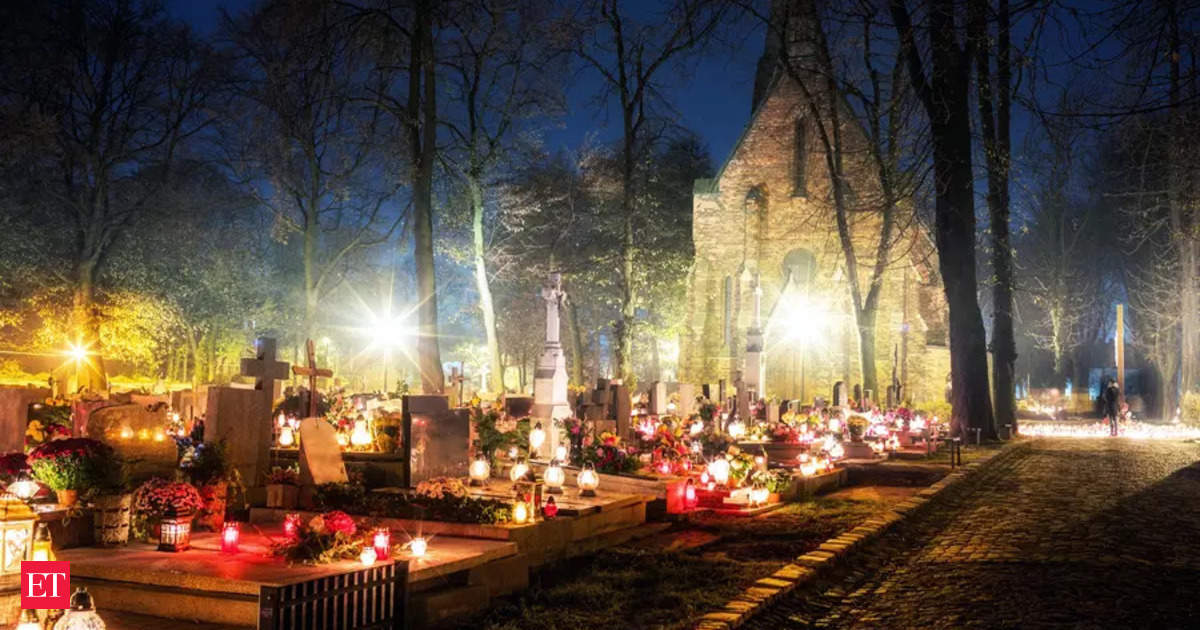All Saints’ Day, observed globally, holds a revered place in the Catholic faith. It goes by various titles like ‘Hallowmas,’ ‘All Hallows’ Day,’ and ‘the Solemnity of All Saints.’ Primarily, it serves as a day to honor all saints in the Catholic tradition, irrespective of whether they have their designated feast day. Celebrated predominantly in European nations like Portugal, Spain, Italy, France, and many others, as well as in the United States, Latin America, and England, the significance remains consistent. Although in Mexico, the date shifts to November 2nd, the underlying essence is unaltered.
Historical Background on All Saints’ Day
Spanning three days, the festivities commence with All Hallows Eve (Halloween) on October 31, peak on November 1 with the All Saints’ commemoration, and conclude on November 2, known as All Souls’ Day. While Halloween is now popularly celebrated in the American context, its historical significance as the eve of All Saints’ Day isn’t forgotten.
Tracing back, All Saints’ Day was first recognized in the fourth century, born from the Roman tradition of venerating the persecuted Christians and admired saints. However, it was only in the seventh century that Pope Boniface IV declared it a feast. Strategically shifted to November 1 in the 8th century, it synchronized with the Celtic festival of Samhain, echoing similar themes. The Protestant Reformation saw both Anglican and Lutheran churches retaining All Saints’ Day, albeit with a shifted focus from saint worship to commemorating all Christians.
The Essence of the Celebration
Central to All Saints’ Day is the belief in the bond between the living and the heavenly. Recognizing and thanking the saints, known and unknown, is paramount. It is a day marked with profound reverence in the Catholic Church, often considered a Holy Day of Obligation, necessitating mass attendance. While the day remains intertwined with the saints, it also underscores their role in guiding souls to salvation. Presently, All Saints’ Day coexists with Halloween, urging many to revisit its Christian roots and significance.
Global Celebrations and Traditions
From North to South America, ‘Dia de Los Santos’ or ‘Dia de los Muertos’ (Day of the Dead) is predominant. Interweaving indigenous beliefs with All Saints’ Day traditions, Latin America sees families visiting graveyards, offering food, and holding parties in cemeteries, encapsulating joyous remembrance.
European celebrations, on the other hand, are diverse. Eastern Europe witnesses families lighting candles on graves, while in Germany and Austria, godfathers present pastries to godchildren. Ireland leans heavily into its Celtic roots, cherishing a time when the mortal and spiritual realms intertwine. And Italy, with its close ties to the Catholic Church, observes unique regional celebrations, with All Saints’ Bread being a common offering.
FAQs:
– What is All Saints’ Day?
All Saints’ Day, observed globally, holds a revered place in the Catholic faith. It goes by various titles like ‘Hallowmas,’ ‘All Hallows’ Day,’ and ‘the Solemnity of All Saints.’ Primarily, it serves as a day to honor all saints in the Catholic tradition, irrespective of whether they have their designated feast day.
– What is Halloween?
Halloween, celebrated on October 31st, is a holiday marked by activities such as trick-or-treating, wearing costumes, carving pumpkins, and attending themed parties. It has ancient origins, stemming from the Celtic festival of Samhain, when people lit bonfires and wore costumes to ward off ghosts.











